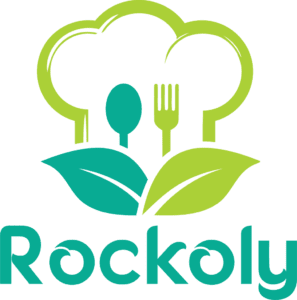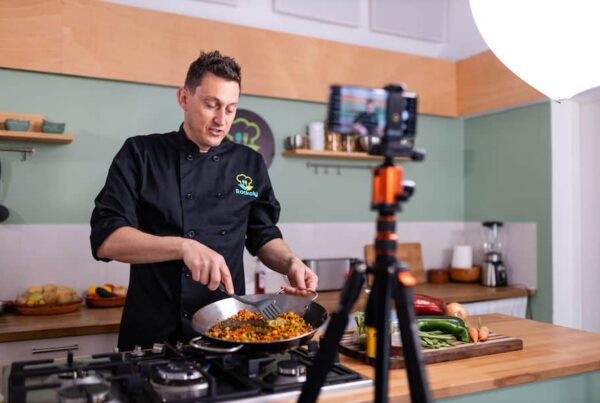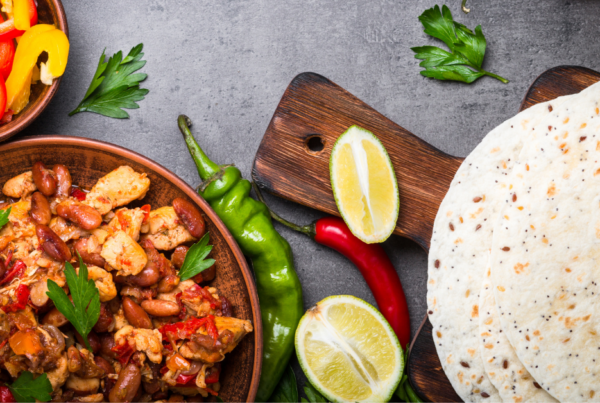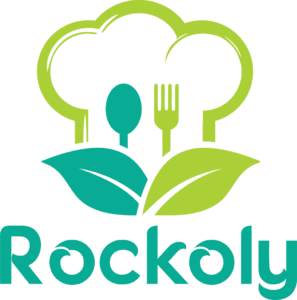As we usher in another Mental Health Month, it’s a critical moment to shed light on the importance of maintaining a balanced mental state. One surprising avenue to enhancing mental health is nestled in our daily lives – cooking. This article takes an in-depth look at how cooking contributes to better mental health and the role it can play during Mental Health Month.
Mental Health Month, also known as Mental Health Awareness Month, traces its roots back to the United States in 1949. The initiative was first introduced by the Mental Health America organization, formerly known as the National Association for Mental Health, with the goal to raise awareness and educate the public about mental illnesses, the realities of living with these conditions, and strategies for maintaining mental health wellness. The objective was to also draw attention to suicide, which can be precipitated by mental health problems, and to reduce the stigma that surrounds mental health issues. Over time, this initiative gained traction not only in the United States but also across the globe. Every year in May, various activities, events, and discussions are organized to mark Mental Health Month and continue promoting mental health awareness.
Understanding Mental Health
Mental health encompasses our emotional, psychological, and social well-being. It affects how we think, feel, and act. More importantly, it helps determine how we handle stress, relate to others, and make choices. Maintaining good mental health is vital at every stage of life, from childhood and adolescence through adulthood.
Over the years, society has increasingly recognized mental health’s significance. Yet, there remains a stigma around it. This stigma can be reduced through awareness initiatives like Mental Health Month. By acknowledging Mental Health Month, we show our commitment to understanding and fostering mental well-being in ourselves and our communities.
The Connection Between Cooking and Mental Health
In our quest to promote mental wellness, the art of cooking presents a unique approach. Cooking is not just about satisfying hunger; it can also serve as a therapeutic tool that aids our mental health. But how does this happen?
- Mindfulness: Cooking is a mindful activity. It requires focus, helping to keep your mind concentrated on the task at hand, thus diverting it from stressful thoughts. Cooking engages our senses – the scent of fresh herbs, the sound of sizzling garlic, the touch of kneading dough, the sight of a perfectly golden pie crust, and, of course, the taste of the finished product. By bringing our attention to these sensations, we are practicing mindfulness, a proven method to reduce anxiety and increase mental well-being.
- Creativity and Self-Expression: Cooking provides an outlet for creativity and self-expression. Experimenting with recipes, trying different ingredients, and playing with presentation techniques allow for an enriching creative process. This creative aspect of cooking can be therapeutic and beneficial to our mental health, providing a positive outlet for emotion and reducing stress.
- Accomplishment and Self-Efficacy: Preparing a meal and seeing the end result provides a sense of accomplishment. This feeling can significantly boost your mood and self-esteem, fostering self-efficacy, the belief in your abilities to handle different situations.
- Social Connection: Sharing food is an age-old practice of socializing and connecting with others. Preparing a meal for loved ones can strengthen relationships, and the positive social interactions can boost your mood and overall mental well-being.
Promoting Mental Health Through Cooking During Mental Health Month
Celebrating Mental Health Month provides the perfect opportunity to explore cooking as a mental health aid. Whether you are an experienced cook or a novice, here are some ways you can incorporate cooking into your Mental Health Month activities.
- Hold a Cooking Challenge: Organize a cooking challenge among your friends, family, or colleagues. It could be as simple as everyone cooking the same recipe and sharing their results, or as ambitious as a virtual ‘cook-off’. The competition adds an element of fun, and the shared activity can foster connection and community.
- Cook Mindfully: Try to cook with mindfulness. Focus on the task at hand, engage your senses, and immerse yourself in the process. You might be surprised how calming and therapeutic this can be.
- Experiment with New Recipes: Trying new recipes can be an excellent way to stimulate your mind and explore creativity. It also provides a sense of accomplishment once you’ve successfully prepared a new dish.
- Share Your Creations: Cooking is more fun when you get to share your creations. Share a meal with your loved ones, or if distance is an issue, share photos or even send a recipe for them to try. Sharing in this way promotes a sense of community, which can significantly enhance your mental well-being.
Recipe Title: Mindful Mediterranean Buddha Bowl
This nutrient-rich, vibrant, and tasty recipe is designed to engage all your senses as you cook, promoting mindfulness, and supporting mental health.
Ingredients
For the Bowl:
- 1 cup quinoa
- 2 cups water
- 1 medium sweet potato, cubed
- 1 cup chickpeas, rinsed and drained
- 1 cup cherry tomatoes, halved
- 2 cups fresh spinach leaves
- 1 avocado, sliced
- 1 tablespoon olive oil
- Salt and pepper to taste
For the Dressing:
- 1/2 cup Greek yogurt
- Juice of 1 lemon
- 1 clove garlic, minced
- 1 tablespoon fresh dill, chopped
- Salt and pepper to taste
Instructions
- Mindfully Cooking Quinoa: Rinse quinoa under cold water until water runs clear. This process not only cleans the quinoa but allows you to engage with the sense of touch. Bring quinoa and water to a boil in a saucepan. Reduce heat to low, cover, and simmer for 15 minutes, or until water is absorbed, and quinoa is tender.
- Roasting Sweet Potatoes and Chickpeas: Preheat your oven to 400°F (200°C). Toss sweet potato cubes and chickpeas in olive oil, salt, and pepper. Spread them out on a baking sheet and roast in the oven for 20-25 minutes or until sweet potatoes are tender and chickpeas are crispy. Pay attention to the transformation of ingredients—the colors, smells, and sounds—enhancing your cooking mindfulness.
- Preparing the Dressing: While your quinoa and vegetables are cooking, prepare the dressing. In a small bowl, whisk together Greek yogurt, lemon juice, minced garlic, fresh dill, salt, and pepper. Notice the tangy smell of the lemon, the fresh aroma of the dill, and the creamy texture of the yogurt.
- Assembling the Bowl: To assemble the Buddha bowl, divide the cooked quinoa between two bowls. Arrange roasted sweet potatoes, crispy chickpeas, halved cherry tomatoes, fresh spinach leaves, and sliced avocado on top of the quinoa. Drizzle with the Greek yogurt dressing.
- Mindful Eating: Take a moment to appreciate your creation, the different colors and textures, and the nourishment it will provide. As you eat, savor each bite, focusing on the flavors and how they combine.
Enjoy this Mindful Mediterranean Buddha Bowl for Mental Health Month, a testament to the healing power of cooking. And remember, mental health is a lifelong journey, so feel free to revisit this recipe or explore new ones any time you want to cook mindfully.
For Dessert
Mental Health Month is an invaluable occasion to put mental health issues at the forefront, reduce stigma, and promote mental wellness strategies. Cooking, with its therapeutic and mindful nature, is a simple yet effective tool that can contribute positively to mental health.
In a world where mental health issues are increasingly prevalent, let’s embrace and celebrate initiatives like Mental Health Month. Remember, our kitchens can be an unexpected sanctuary for fostering our mental health, so let’s turn up the heat and get cooking!








